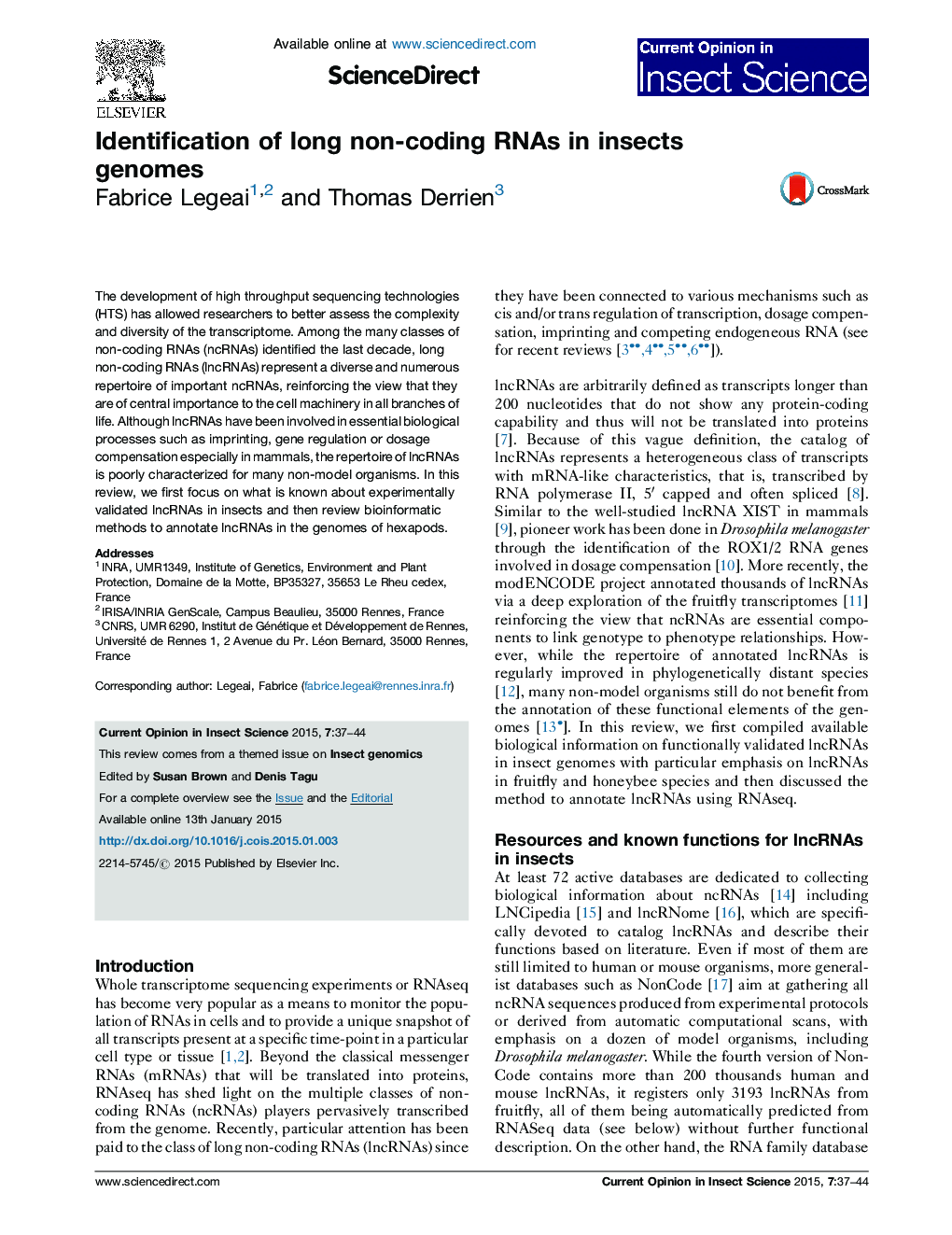| Article ID | Journal | Published Year | Pages | File Type |
|---|---|---|---|---|
| 4508301 | Current Opinion in Insect Science | 2015 | 8 Pages |
•Long non-coding RNAs play important roles in the functioning of the cells of several species.•A few numbers of lncRNAs are experimentally validated in insect genomes, specifically in fruitfly and honeybee.•Transcriptome sequencing (RNASeq) and computational methods can be used to establish a catalog of lncRNAs in non-model organisms.
The development of high throughput sequencing technologies (HTS) has allowed researchers to better assess the complexity and diversity of the transcriptome. Among the many classes of non-coding RNAs (ncRNAs) identified the last decade, long non-coding RNAs (lncRNAs) represent a diverse and numerous repertoire of important ncRNAs, reinforcing the view that they are of central importance to the cell machinery in all branches of life. Although lncRNAs have been involved in essential biological processes such as imprinting, gene regulation or dosage compensation especially in mammals, the repertoire of lncRNAs is poorly characterized for many non-model organisms. In this review, we first focus on what is known about experimentally validated lncRNAs in insects and then review bioinformatic methods to annotate lncRNAs in the genomes of hexapods.
